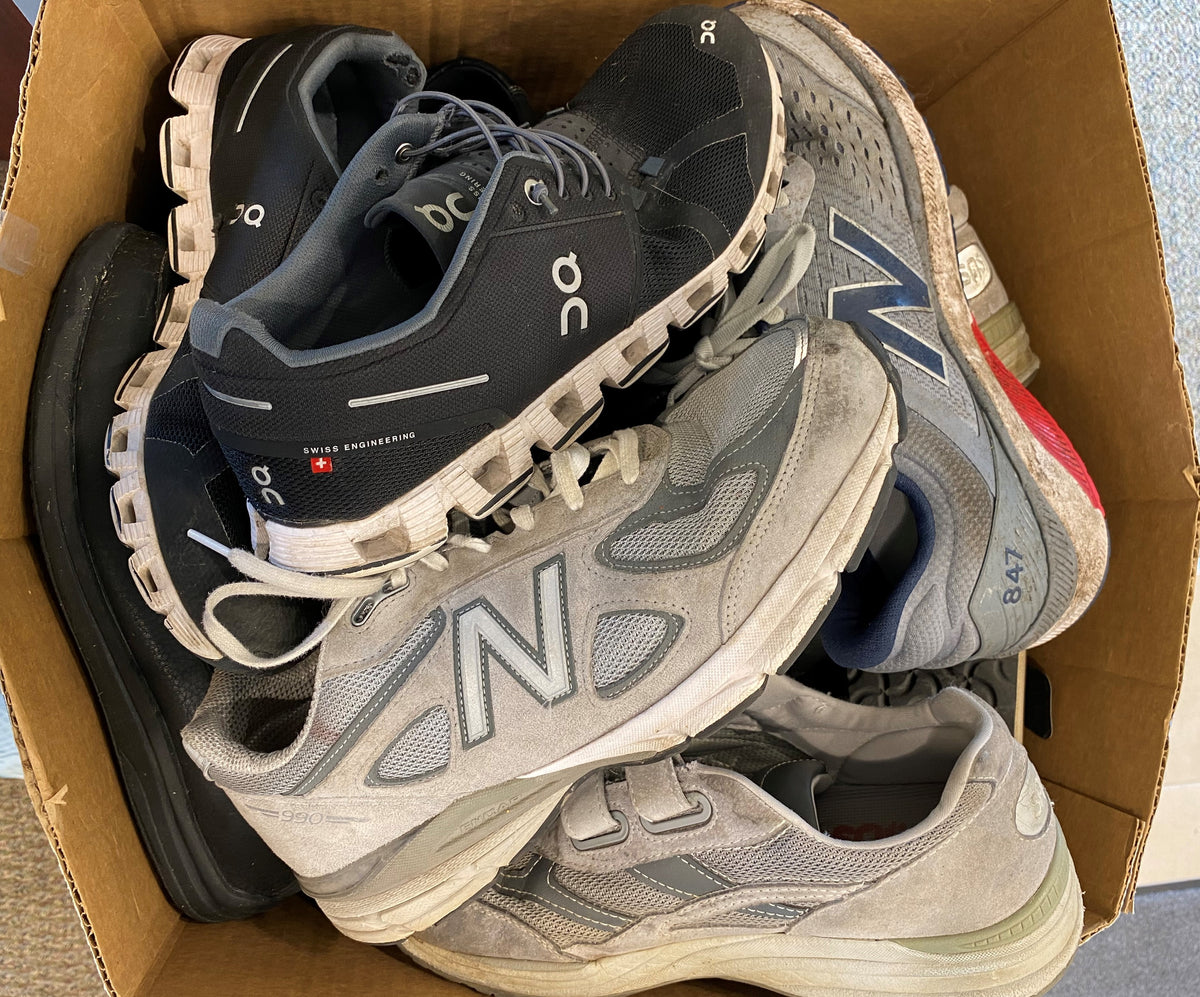3 Signs Your Running Shoes Need to Be Replaced

‘How often should I replace my running shoes?’ At Lucky Shoes, we get asked this question every day. The simple answer is the foams and meshes in today’s running shoes will generally last about 300-500 miles, but there are a few key “science and math” variables that contribute greatly.
Variables that impact the life of a running shoe.
The type of shoe.
On a 150 pound male that runs 20 miles a week, a plush, cushioned, thick soled training shoe will last roughly twice as long as an extremely light weight racing shoe. Running shoes that are lighter weight and lower profile will generally wear out quicker on the same set of feet than shoes that were made for high mileage. At Lucky Shoes, we ask lots of questions about your goals, what has worked for you in the past, and how you will be using the shoes. After that, we make a recommendation based on what we have learned.
The type of person.
Here is where we talk science and get a little nerdy. In general, the heavier the person the more stress on the feet and shoes. Walking generates an “impact force” of roughly 1.5 times a person’s body weight per step. Running creates a force of 2.9 times a person’s body weight per step. One huge variable in this impact force measurement is a person’s running cadence. A person that takes shorter, quicker steps will impart significantly less force than a person that takes longer, slower strides.
The person’s biomechanics.
Someone who pronates excessively [rolls their feet inward], or supinates [wears their shoes off to the outside] will actually do much better in newer shoes and will want to replace their running shoes more frequently than someone with a neutral gait. The twisting of the materials adds to the stresses on the shoe, and reduces the benefits of the shoe for those in need of some extra support. At Lucky Shoes, we get lots of clues from the minute we see you walking across the parking lot. We also examine your foot structure while we measure your feet, and do a test called a pedigraph [also known as a Harris Mat] to determine biomechanics and pressure points. Much of our recommendations are based off of what we observe.
The best tip for knowing when it is time for a trip to the shoe store is buy two pairs of the same running shoe. Wear one pair 3-4 times per week, and wear the other pair once per week. When you hit the point where your once per week shoe is far more comfortable, make it your 3-4 times per week shoe and get a new once per week shoe. This not only lets you know when it is time for a trip to the store, it also increases the life of both pairs of shoes!